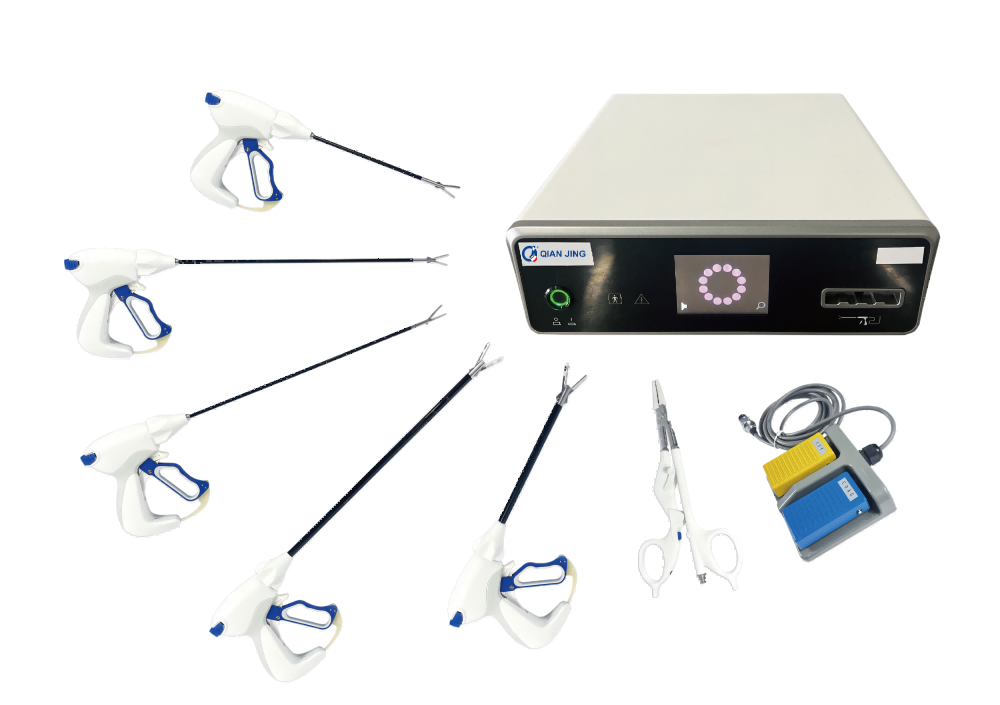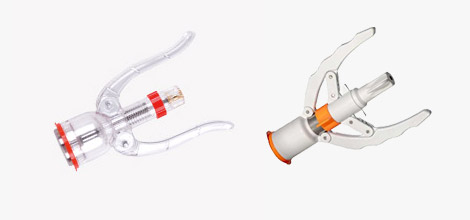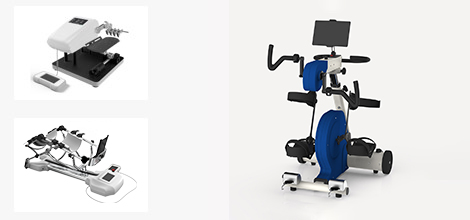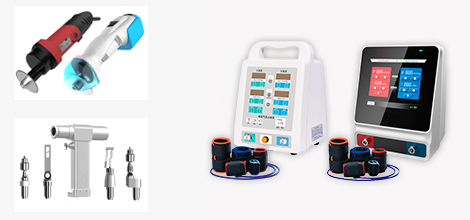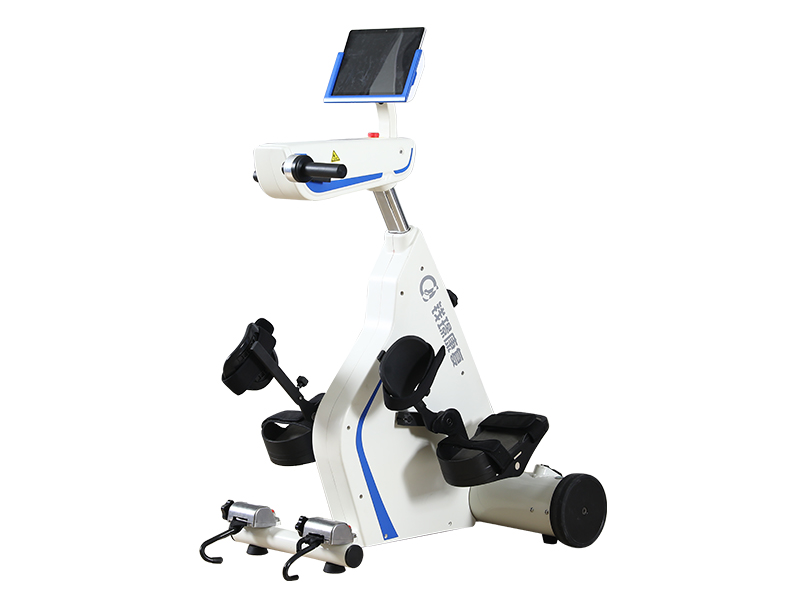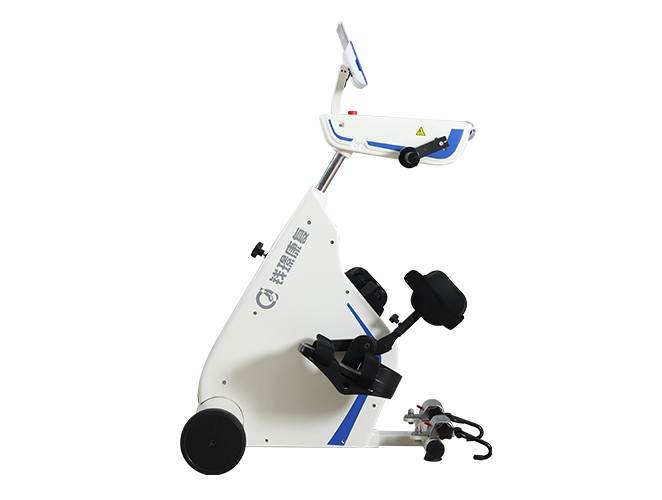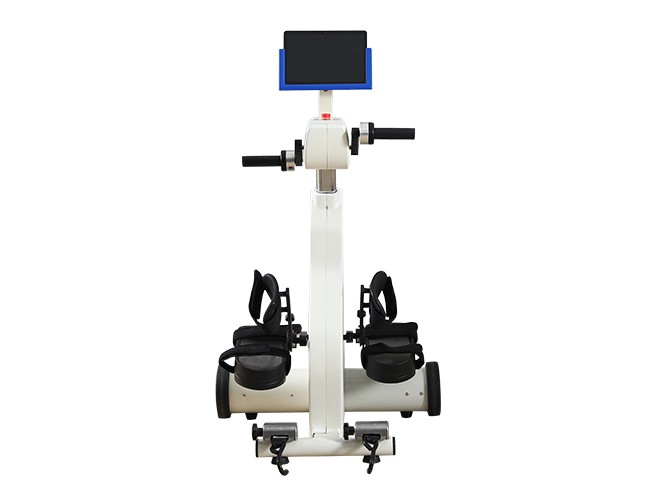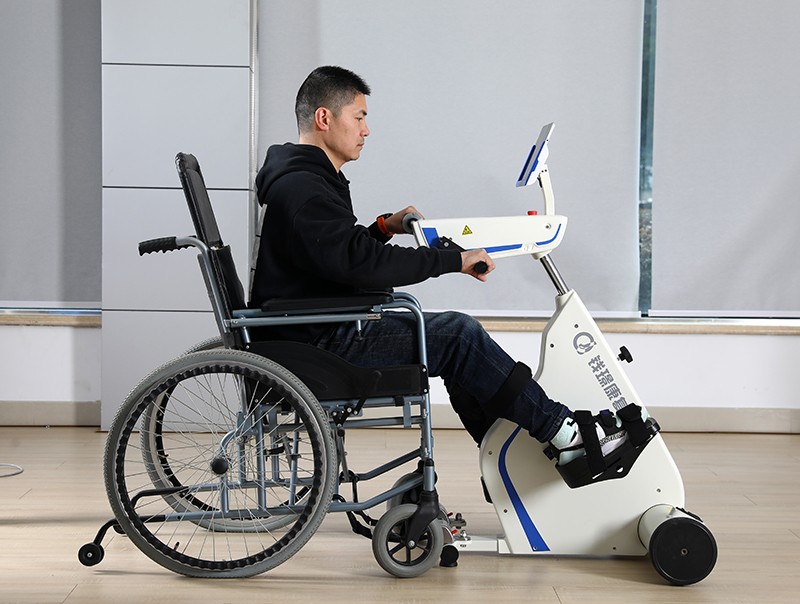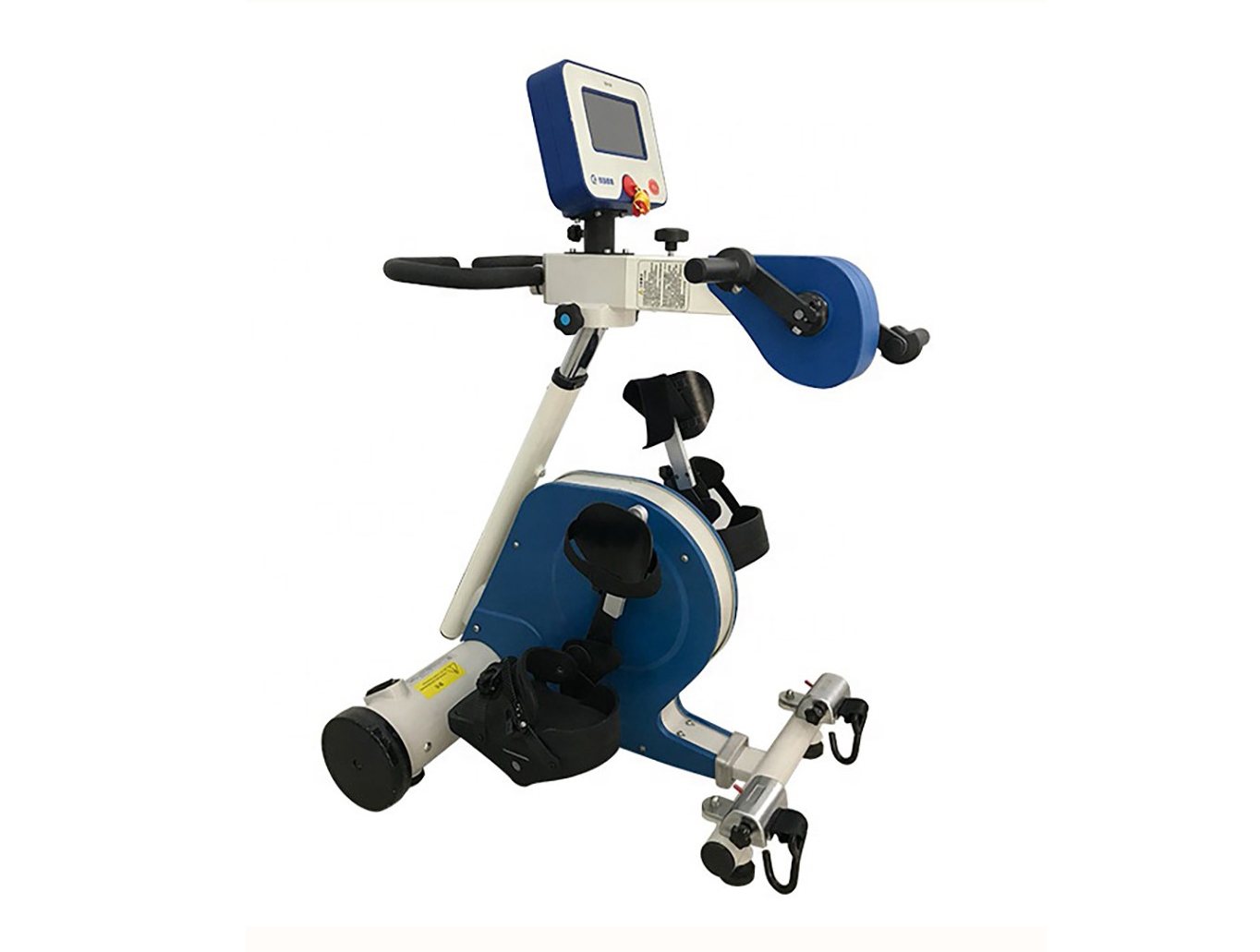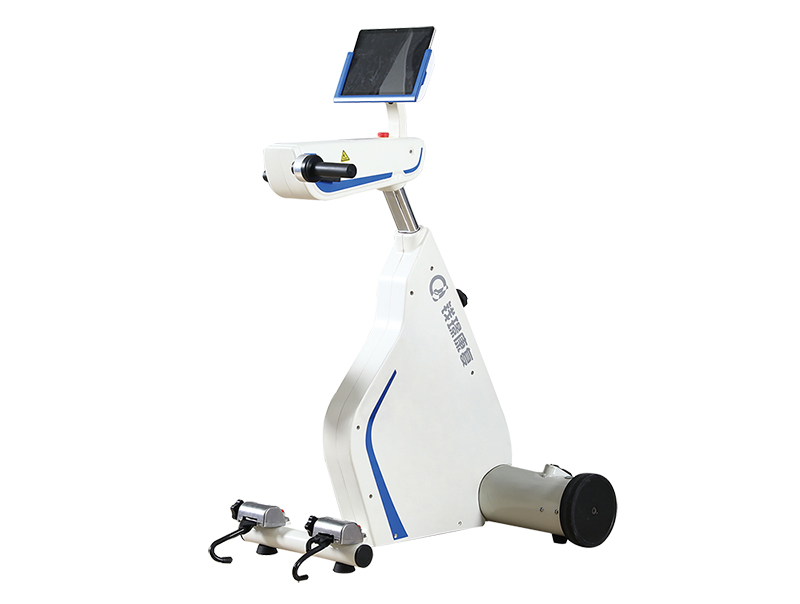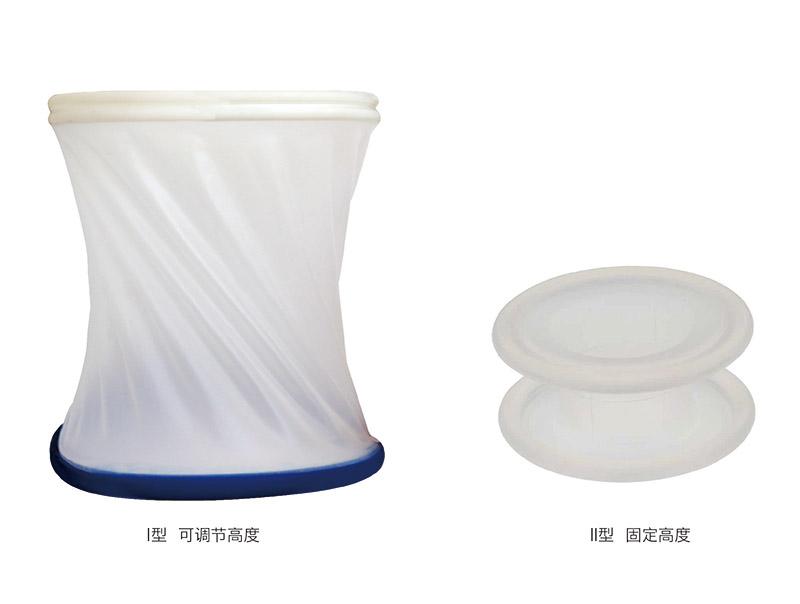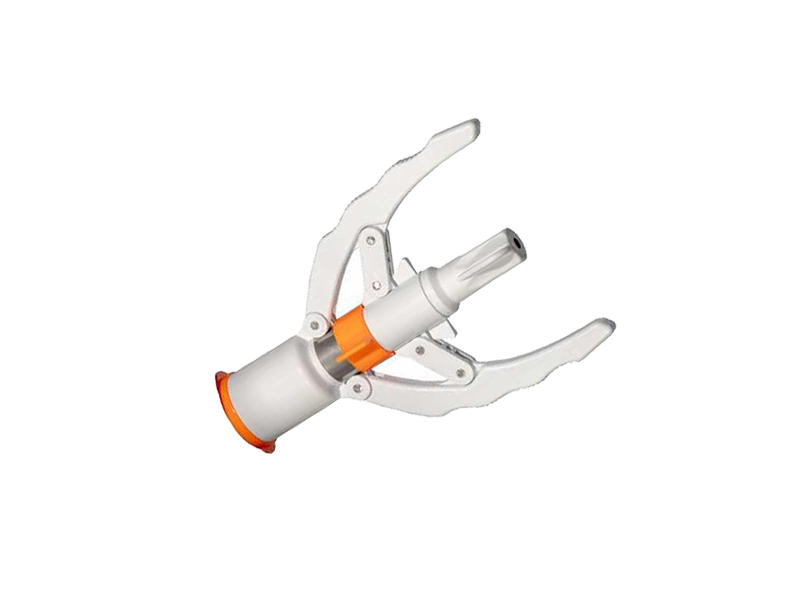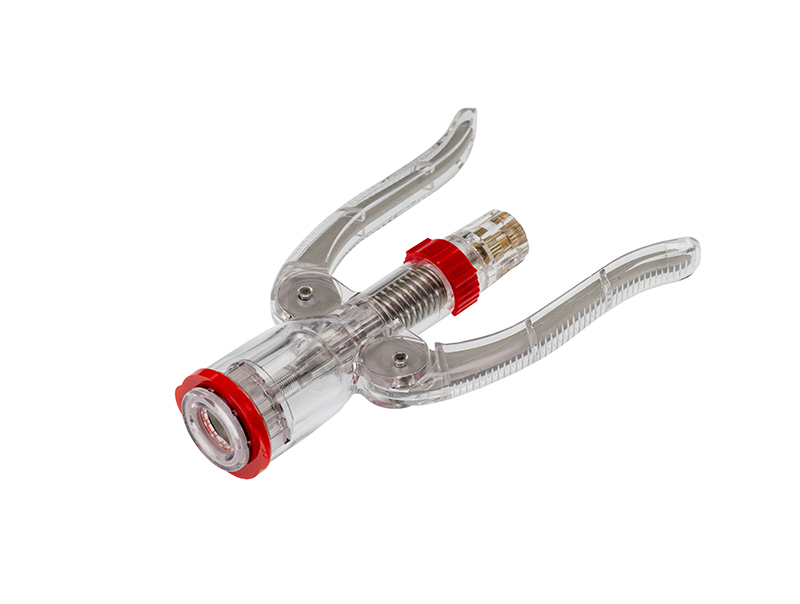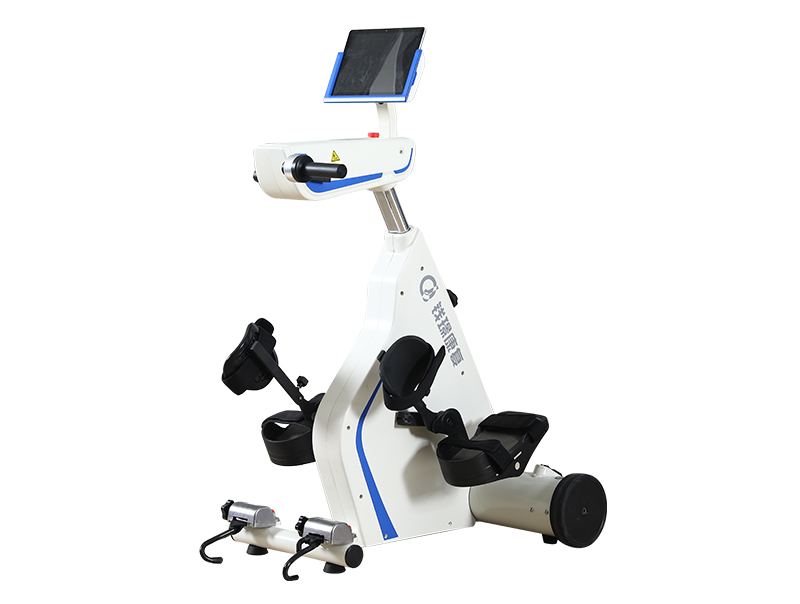
Upper and lower limb exercise rehabilitation training system
1. Scope of application:
Rehabilitation training for patients with joint dysfunction.
2. Product composition:
The product consists of hardware and software. The hardware includes tablet computer, emergency stop switch, upper limb crank, knob, calf bracket, lower limb crank, base assembly, pedal, front wheel, wheelchair fixing hook, etc.
3. Working environment:
Ambient temperature: +5 ℃~+40 ℃;
Relative humidity: ≤80%;
Atmospheric pressure: 860 hPa~1060 hPa;
Power supply voltage: AC220 V ± 22 V, power frequency: 50 Hz ± 1 Hz;
Input power: 300 VA.
4. Technical parameter:
1. The touch operation of a tablet computer of ≥10 inches is convenient for patients with weak muscles.
2. The inclination of the screen can be adjusted, so that patients of different heights can operate and view at the most comfortable angle.
3. The Windows operating system is convenient for software upgrades and the software runs more smoothly.
4. The system can be directly connected to the printer to print the report, without the need for an external USB flash drive or other devices.
5. The system supports virtual printing, and the training report can be exported into different formats and saved in the computer.
6. Dimensions (length × width × height): 760mm × 720mm × 1130mm.
7. It has a wheelchair fixing device, which can fix the wheelchair or chair to prevent backward sliding and ensure the safety of training.
8. Adjustment of the height and stroke of the calf bracket: 0-110mm, the bracket can be adjusted according to the length of the patient's calf.
9. Upper limb stroke adjustment: 0-175mm, the stroke can be adjusted according to the sitting height of the patient.
10. The front of the device has a moving wheel, which is convenient to move.
11. Adjustment range of training time: 1 to 60 min, with a step of 1 min.
12. Adjustment range of passive training speed: 1~60 r/min, step is 1r/min.
13. The motor power level is divided into three levels: low, medium and high, which can be adapted to patients with different muscle tension levels or limb weights.
14. Training resistance adjustment: 0 to 20 levels, the difficulty increases step by step, and the step is 1.
15. ★ Spasticity level: adjustable from 1 to 6 levels, the step is 1, the higher the level, the higher the spasm sensitivity, the easier it is to trigger the spasm protection.
16. Spasm protection can be turned on or off.
17. The training direction is adjustable, and the reversing methods include manual reversing and automatic reversing.
18. Automatic commutation time: 0-30min adjustable.
19. Speed preset value: ≤10r/min.
20. Speed change rate: ≤0.5r/s².
21. Overspeed protection: When the active training speed exceeds 100r/min, the equipment stops moving.
22. Spasticity response time: ≤5s.
23. Working noise: ≤60dB (A).
5. Features and Functions
1. Patient management
1.1 ★With patient information storage, thousands of patient information can be saved.
1.2 You can search quickly by entering the patient's name and number.
1.3 ★When deleting a patient, you need to enter a security password for confirmation to prevent other people from misoperating or maliciously tampering with information.
2. Game training
2.1 ★At least 6 kinds of training games are available, which can realize that the training games are not repeated every day in a week, and the patients always keep the freshness of training.
2.2 The difficulty of game training can be adjusted.
2.3 ★The game interface displays the score of the game in real time, accompanied by game sound effects, to promote the active participation and enthusiasm of patients.
3. Basic training: separate training for upper or lower limbs.
3.1 Active training mode, perform resistance muscle strength training for patients with upper or lower limb muscle strength grades 3-4.
3.2 In passive training mode, passive range of motion training is performed on patients with upper or lower limb muscle strength grades 0-1.
3.3 Assist mode: When the user's strength is not able to do a complete circular movement, the motor can assist the user to complete the movement, and assist the limb movement for the limbs with muscle strength level 1-2.
3.4 ★Isokinetic training mode: training at a constant range of rotation speed, the resistance will increase with the increase of the patient's force program, control the rotation speed, and ensure the safety of muscle strength training.
3.5 Active mode and passive mode can be switched automatically.
4. Collaborative training: the upper and lower limbs are trained at the same time, which is suitable for hemiplegia or paraplegic patients with different degrees of limb damage.
4.1 ★Single passive mode: The joint training of the four limbs is carried out in the way that the healthy limb drives the affected limb and one limb drives the three limbs, which improves the coordination of the limbs and saves the training time of hemiplegia patients.
4.2 Single passive upper limb: Through the active resistance training of the lower limb, the upper limb is driven to perform passive training at the same speed. It is suitable for hemiplegia patients with poor upper limb function and better lower limb function.
4.3 Single passive lower limb: Through active resistance training of the upper limb, the lower limb is driven to perform passive training at the same speed. It is suitable for hemiplegia or paraplegic patients with poor lower limb function and better upper limb function.
4.4 ★Dual passive training mode, the four limbs can be passively trained at the same time, and there are two phase differences of 0 degrees or 180 degrees for the upper and lower limbs, so that the upper and lower limbs can be trained synchronously, or the upper and lower limbs can be asynchronously trained. It can be applied to hemiplegic patients or high paraplegic patients with poor upper and lower limb function.
4.5 ★Free training mode. During the training process, the upper and lower limbs can be trained at the same time without affecting each other. The upper and lower limbs can independently choose active or passive training according to the state of muscle strength.
5. Training report: At the end of the training, all training records of the patient can be automatically saved and a training report can be generated.
5.1 The training report includes basic information (name, number, gender, age, height, weight, etiology), training parameters (game name, training mode, spasticity level, training location, game difficulty), training situation (game score, average power , average speed, energy expenditure, number of spasms, training distance, training duration, symmetry ratio)
5.2 ★The change of training trend should be reflected in the training report, including the power change trend chart and the resistance/speed change trend chart, so that the clinic can have a clear and comprehensive grasp of each training situation of the patient.
5.3 The generated training report can be saved, exported and printed.
5.4 ★It can screen and compare and analyze the patient's multiple training reports. The analysis results can generate reports and support exporting and printing, which is convenient for clinical evaluation of the patient's functional changes over a period of time.
5.5 Training reports can be filtered and viewed by date.
5.6 ★The header of the training report can be modified, including hospital and department information, which is beneficial to clinical charges.
6. At least the following 6 safety protection functions
6.1 Spasm protection, according to the patient's spasticity, different sensitivity can be set.
6.2 Overspeed protection, when the instantaneous rotation speed is too large during the training process, the equipment will be shut down to avoid muscle strain.
6.3 Manual emergency stop, the machine has a key emergency stop device and obvious indication signs near the body.
6.4 When the passive speed is set too large, a confirmation window will pop up to remind the operator to prevent misoperation.
6.5 ★You need to fill in a security password during software login and important operations to prevent others from misoperation or treatment information from being tampered with or leaked.
6.6 Speed limit protection: During single passive training, speed limit protection is applied to the passive limbs to prevent the active limbs from training too fast and causing strain on the affected limbs.
7. Support the modification of default parameters. According to the hospital's usage habits and patient categories, you can set the default training time, passive speed, default resistance size, spasm level, automatic reversal time, etc., to reduce repeated adjustment training every time you get on the machine parameter time.
8. Accounts and security passwords can be set to protect information security.
9. It has the function of symmetry detection of bilateral limbs, and the symmetry changes are displayed on the interface in real time during training. At the same time, the symmetry detection results can be reflected in each training report, which is convenient for data comparison and information traceability.



 info@qjmed.com
info@qjmed.com
